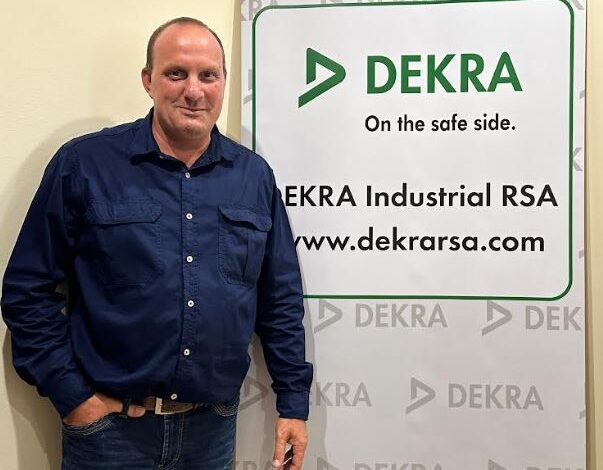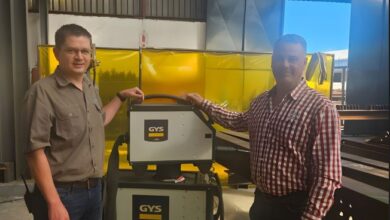
Neurocentricity: pivotal to occupational safety – and success
The pursuit of safety and success remains a top priority for organisations across industries. However, achieving these goals requires more than just robust safety protocols and procedures. It demands a deeper understanding of human behaviour and cognition within the workplace – and a willingness to implement organisational cultural change accordingly, says Christopher Mörsner, Head of Training and Consulting at the Dekra Institute of Learning (IOL).
What is neurocentricity?
Neurocentricity, as Mörsner defines it, is the integration of neuroscience principles into organisational culture and behaviour. It emphasises the importance of empowering employees to take ownership of their actions and decisions, shifting away from a mentality of reliance on employers to one of individual accountability.
“One of the fundamental aspects of neurocentricity, “Mörsner explains,” is acknowledging that trial and error is a natural part of any process. As such, failure and success are two sides of the same coin: if you do not allow for failure, you also do not allow for success.”
Rather than assigning blame when things go wrong, neurocentricity encourages organisations to explore why errors occur – and how they can be prevented in the future. This shift in perspective not only enhances workplace safety, but also cultivates a culture of continuous improvement and innovation.
The impact of neurocentricity
Neurocentricity represents a paradigm shift in how organisations approach safety and performance management. Traditional safety protocols often focus solely on procedural compliance, overlooking the critical role of human behaviour in shaping safety outcomes. However, by integrating neuroscience principles into safety practices, organisations can tap into the intrinsic capabilities of the human brain to enhance decision-making, situational awareness and risk perception.
One key aspect of neurocentricity is its emphasis on creating a culture of psychological safety. In environments where employees feel empowered to voice concerns, ask questions, and share ideas without fear of reprisal, there is a higher likelihood of identifying and addressing safety issues proactively.
Mörsner emphasises the importance of leadership buy-in fostering such a culture, as leaders play an essential role in setting the tone for organisational behaviour and attitudes around safety: “Without a positive attitude from leadership, expecting different outcomes is unrealistic. Leaders play a crucial role in inspiring change among employees, by demonstrating their commitment to the concept – and the implementation thereof. Employees are more inclined to follow suit when leadership sets the correct precedent.”
Safety training: a fresh approach
Neurocentricity offers a fresh perspective on how to approach safety training and education. Traditional safety training programmes often rely on memorising procedures and checklists by rote – which may not effectively translate into real-world decision-making scenarios – or suit everyone’s speed and manner of cognitive processing. In contrast, neurocentricity advocates experiential learning methods which engage both the fast and slow brain functions. By simulating realistic workplace scenarios and providing opportunities for reflection and feedback, organisations can better prepare employees to navigate complex safety challenges.
At the same time, by promoting a heightened awareness of hazards and risks, neurocentricity equips employees with the cognitive tools to identify and address potential safety issues more effectively. It is all about behavioural change, which enhances both the process and the desired outcome.
“Everyone in industry strives for zero harm: whether to employees, the environment or the business at large. Neurocentricity entails training the brain to adopt a specific approach to achieve success. This is applicable across all industries and businesses, and is certainly not limited to safety alone,” Mörsner explains.
Making safe decisions
Addressing common workplace issues such as fatigue, distraction and habituation, Mörsner underscores the importance of understanding human cognition and delving into a deeper understanding of hazards and processes. This entails scrutinising shift patterns, industry norms and – most importantly – human behaviour. As Mörsner aptly puts it, “Staff and management need to grow their understanding of hazards and risk management, as well as the tendency towards complacency in the workplace. Routine and repetition breed a dangerous form of tunnel vision, which blinds people to potential hazards lurking just beyond their immediate focus.”
He warns against falling into this trap, emphasising the importance of maintaining an exciting and dynamic working environment: “If we create repetition, we create tunnel vision and complacency, because this becomes a habit,”he cautions. “Neurocentricity asks us to look around and acknowledge that there is more to life”
Neurocentricity, at its core, is about breaking free from autopilot mode and proactively engaging with our surroundings. “Neurocentricity is about training one’s brain to be more aware. Making safe decisions, or what our global parent company terms ‘MSD’, is for this reason often the last line of defence when it comes to safety in a company,”he affirms.
Furthermore, Mörsner underlines the importance of taking immediate action when hazards are identified. Whether as an employee or employer, it is crucial to respond promptly and effectively to mitigate risks: “If you have identified a hazard, immediately think about ways to correct it – thereby creating a culture of continuous improvement,” advises Mörsner.
Central to the principles of neurocentricity is the concept of slowing down and observing. In the fast- paced environment of the modern workplace, taking the time to pause and reflect can seem counter intuitive. However, Mörsner argues that this deliberate approach is vital for harnessing the full potential of both the slow and fast brain functions. “Understand the person first before you can expect anything to be successful,”he asserts. “Accommodate fast and slow, left and right brains to succeed.”
By embracing a culture of awareness, adaptability and proactive hazard management, organisations can mitigate risks, enhance safety outcomes and – ultimately – unlock their full potential, allowing their people to truly thrive,” Mörsner concludes.
About DEKRA Industrial and DEKRA Institute of Learning
With 99 years in the industry through its global parent company, DEKRA Industrial SA has established a formidable reputation as a leader in inspection services, non-destructive testing (NDT), material testing, laboratory services, Advanced NDT, and asset integrity services, and offers industry training through the DEKRA Institute of Learning.
As part of the global DEKRA group, which has a presence in more than 50 countries on five continents, DEKRA Industrial RSA provides safety solutions across a multitude of industries, including power generation, oil and gas, construction, petrochemical, manufacturing, fabrication, pulp and paper, rail, mining, steel industry and foundries, within South Africa and pan-Africa.
DEKRA Industrial SA is a holistic services provider of NDT inspection and corrosion control with rope access and lifting. DEKRA Industrial SA has 51 percent black woman ownership and has achieved a current overall Broad-Based Black Economic Empowerment (B-BBEE) status of Level 1.
The company is also RD 0034-compliant – a nuclear safety compliance standard – and is one of the few NDT companies locally to hold the ISO 45001:2018 certification; as well as DNV certification, giving DEKRA Industrial access to many inspection opportunities in the maritime sector.
The DEKRA Institute of Learning (IOL) is QCTO-accredited and delivers online learning across all industries, in both public and private sectors, with training pitched to all levels of competency, focusing on HSE, ISO and continuing professional development (CPD)-aligned courses. Classroom-based and distance learning are also available.
DEKRA Industrial strives to be recognised as the ‘heroes of safety’.






